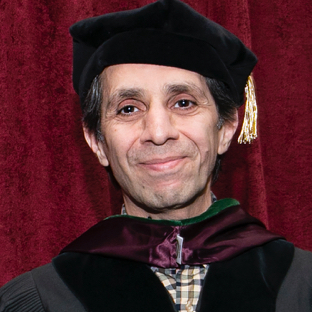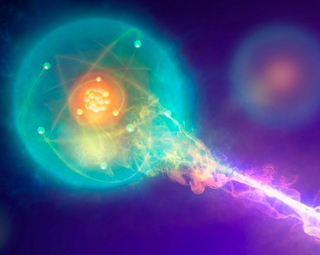Featured Student Research
Graduate School of Biomedical Sciences students are actively involved in research efforts that lead to advances in medical science.
Signal-to-noise ratio characterization of the unified coil system for magnetic resonance imaging and magnetic resonance spectroscopy

Fardad Michael Serry, MS
Principal Investigator
For his Master of Science in Magnetic Resonance in Medicine research project, Fardad Michael Serry, MS—who already holds master's degrees in physics and electrical engineering/computer science—is working toward improving the fidelity of magnetic resonance imaging (MRI) and magnetic resonance spectroscopy (MRS).
Project Summary
The MRI signal is very faint and susceptible to being corrupted by noise. Behind a nice, clear MRI image is a lot of technical work that brings out the contrast, clarity and “diagnostic” quality that physicians depend on for diagnosing and treating illnesses as well as for assessing treatment and disease progression or recession. Separately, the reliability and usefulness of magnetic resonance (MR) data depends, in part, on having a very uniform and homogenous magnetic field inside the scanner bore, where the patient lies while being scanned. Any small variations of this magnetic field can lead to artifacts that, again, can corrupt the data, and render it dubious and/or useless. The work that goes into ensuring the best homogeneity and uniformity of the magnetic field is highly specialized, very intricate, and multifaceted.
The unified coil (UNIC) system, invented by Hui Han, MD, director of Magnetic Resonance Engineering, and Debiao Li, MD, director of the Biomedical Imaging Research Institute, is a state-of-the-art advanced technology that was developed by—and is available only at—Cedars-Sinai.The system addresses some of the most pressing and demanding requirements in magnetic resonance field homogeneity and uniformity. Like its predecessor, (also invented by Dr. Hui Han), it is a true game changer in the field.
Expected Outcomes
Serry's contribution is expected to help the rest of the team press on with refining the existing technology of the UNIC system, and to expand its utility beyond its current domain. The team is working on several UNIC system projects that have the attention of the international community both in the MR industry and in the clinical setting, where MRI scanners help deliver better medicine every day.
Value to Medicine & Science
One of the most important advantages of MR is that it does not involve ionizing radiation. Another is that it provides exquisitely detailed soft-tissue image contrast, and most of the body is comprised of soft tissue. When solving intractable technical problems at the fundamental level, as is being attempted with the UNIC system, it does not address just one disease or one condition, but rather provides a better tool for better medicine that involves many organ systems and pathologies. In this case, it is being done with better MR solutions without ionizing radiation.

As for the science, the most amazing thing about MR is that none of it would be possible if not for quantum mechanics. The team rarely uses quantum mechanics in its day-to-day work, but to know that it is the underlying reality that makes MR possible never loses its fascinating allure. The MR field is truly interdisciplinary, involving physics, biology, chemistry, medicine, computer science, pure and applied mathematics, and statistics. One of the values of any MR work is that it brings together people from different backgrounds, where the whole of their contributions to progress is much bigger than the sum of their parts. This is visible in the team that is pushing the UNIC system forward.
Key Collaborators & Associated Laboratories
- Hui Han, PhD – Director, Magnetic Resonance Engineering, MS thesis adviser
- Wafa Tawackoli, PhD – MSMRM Program Director
- Anthony Christodoulou, PhD – Research Scientist
- Hsin-Jung (Randy) Yang, PhD – Project Scientist
- Yibin Xie, PhD – Research Scientist
- Zhaoyang Fan, PhD – Assistant Professor, Biomedical Sciences; Technical Director, 3T MRI at Research Imaging Core
- Wai Shing (Charles) Liu, MS – Research Associate
- Linda Azab – Research Associate
- Meng Lyu – MSMRM Graduate Student
- Han Laboratory
Have Questions or Need Help?
For inquiries, please contact Wafa Tawackoli, PhD, Associate Program Director.
Office Location:
Pacific Theatres Building
116 N. Robertson Blvd.
Suite 400
Los Angeles, CA 90048
Mailing Address:
Cedars-Sinai
8687 Melrose Ave.
Pacific Design Center, Suite G532-B
Los Angeles, CA 90048
